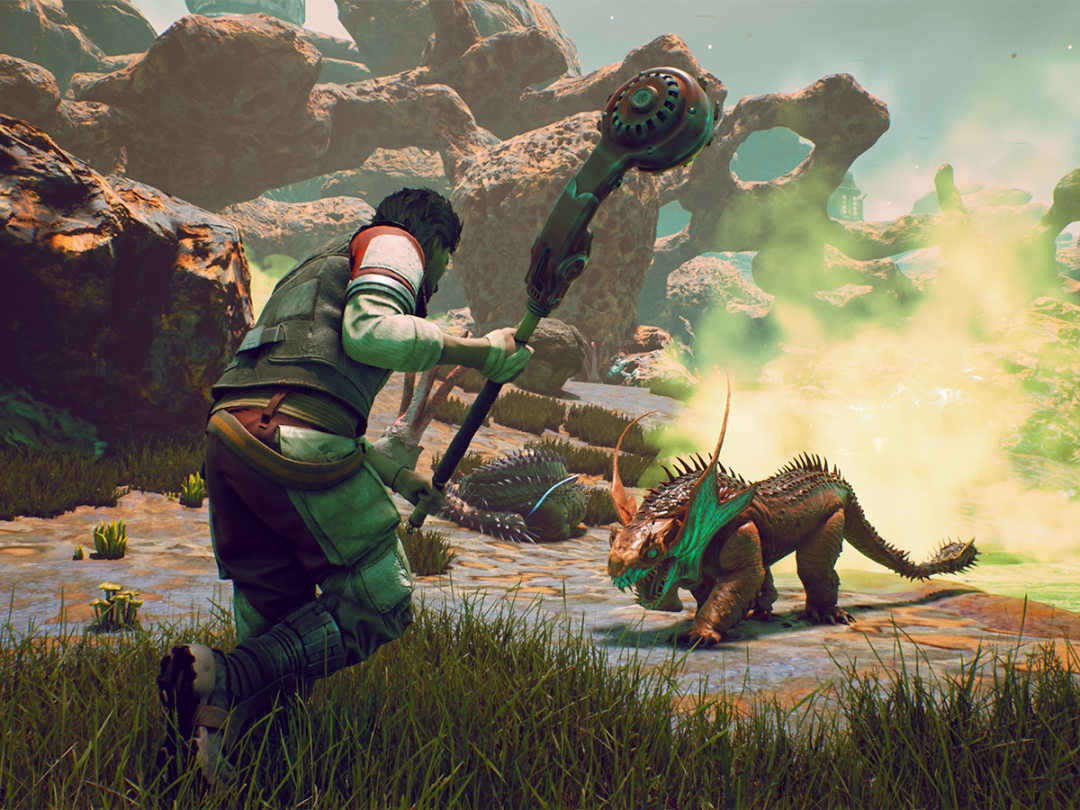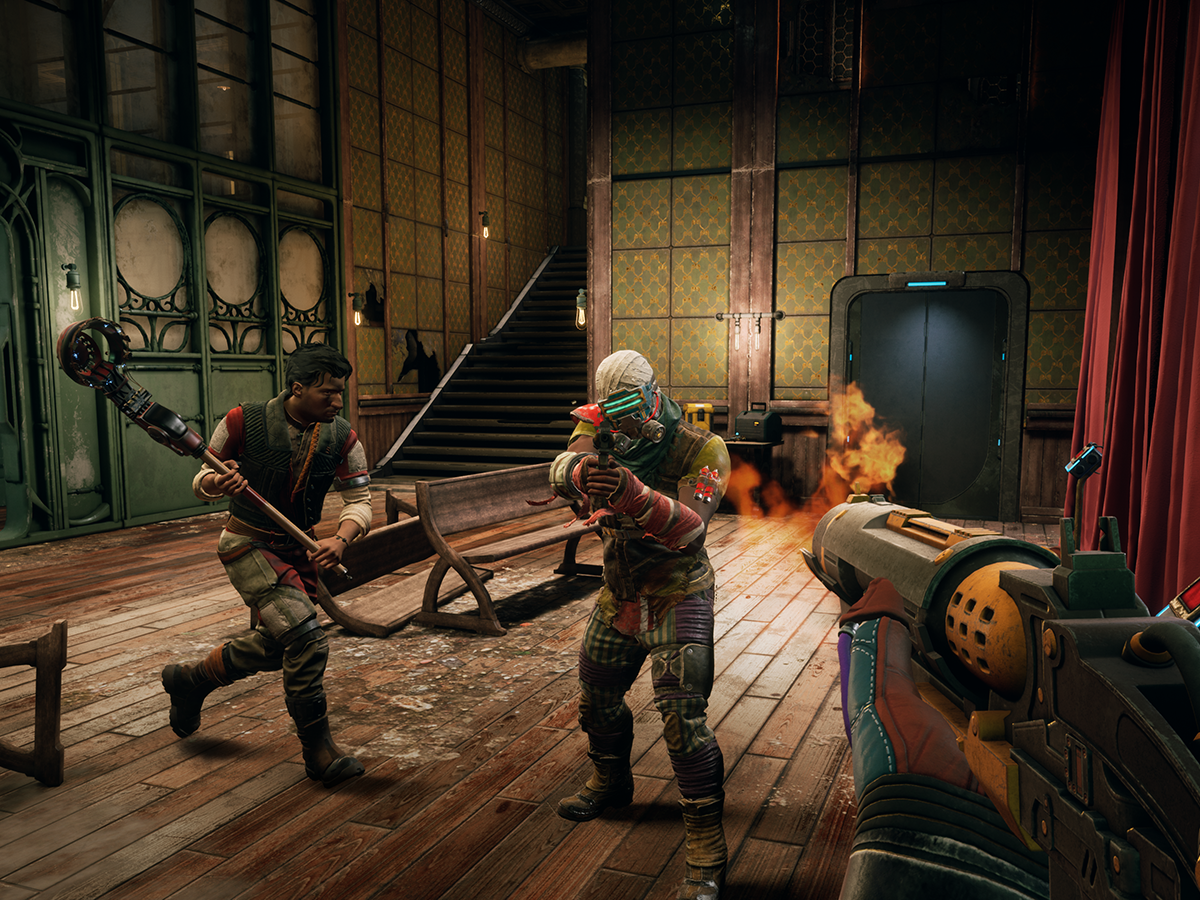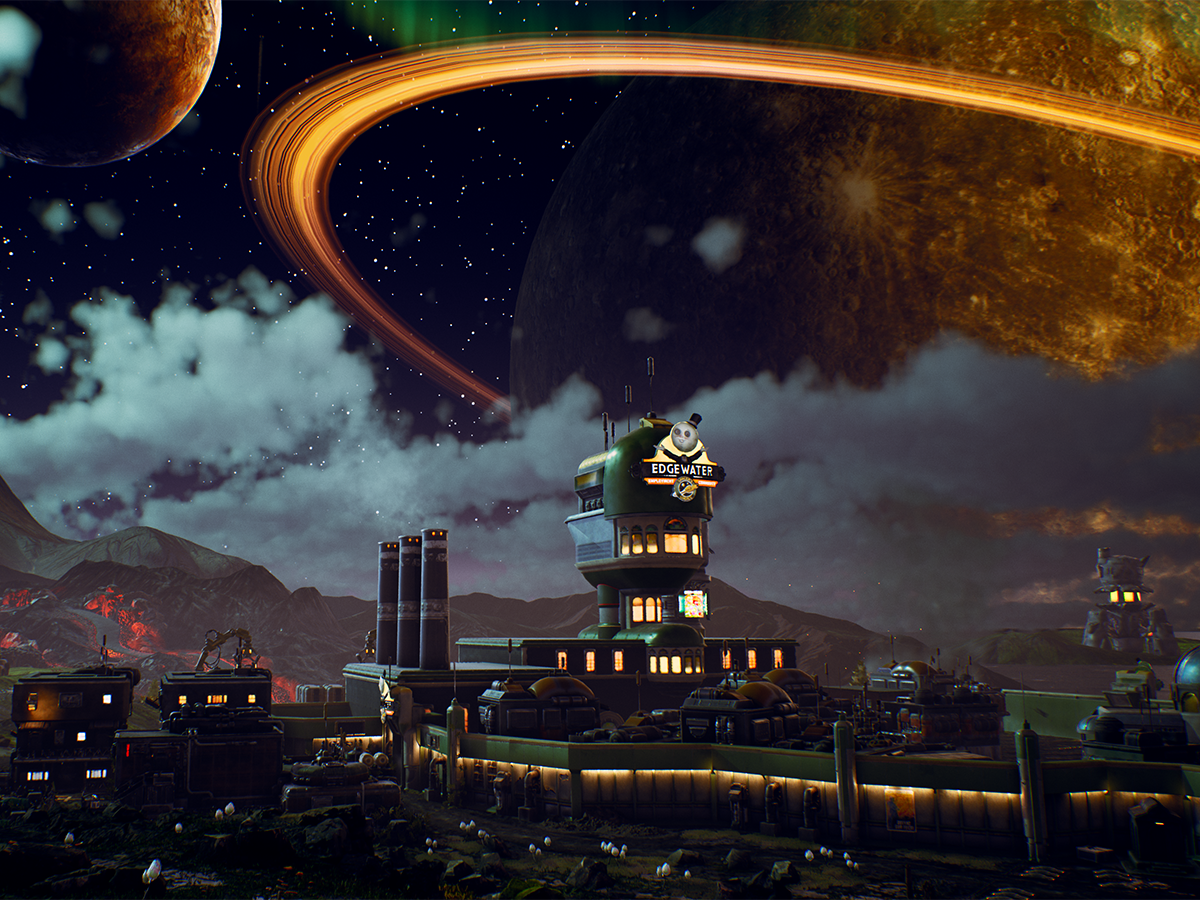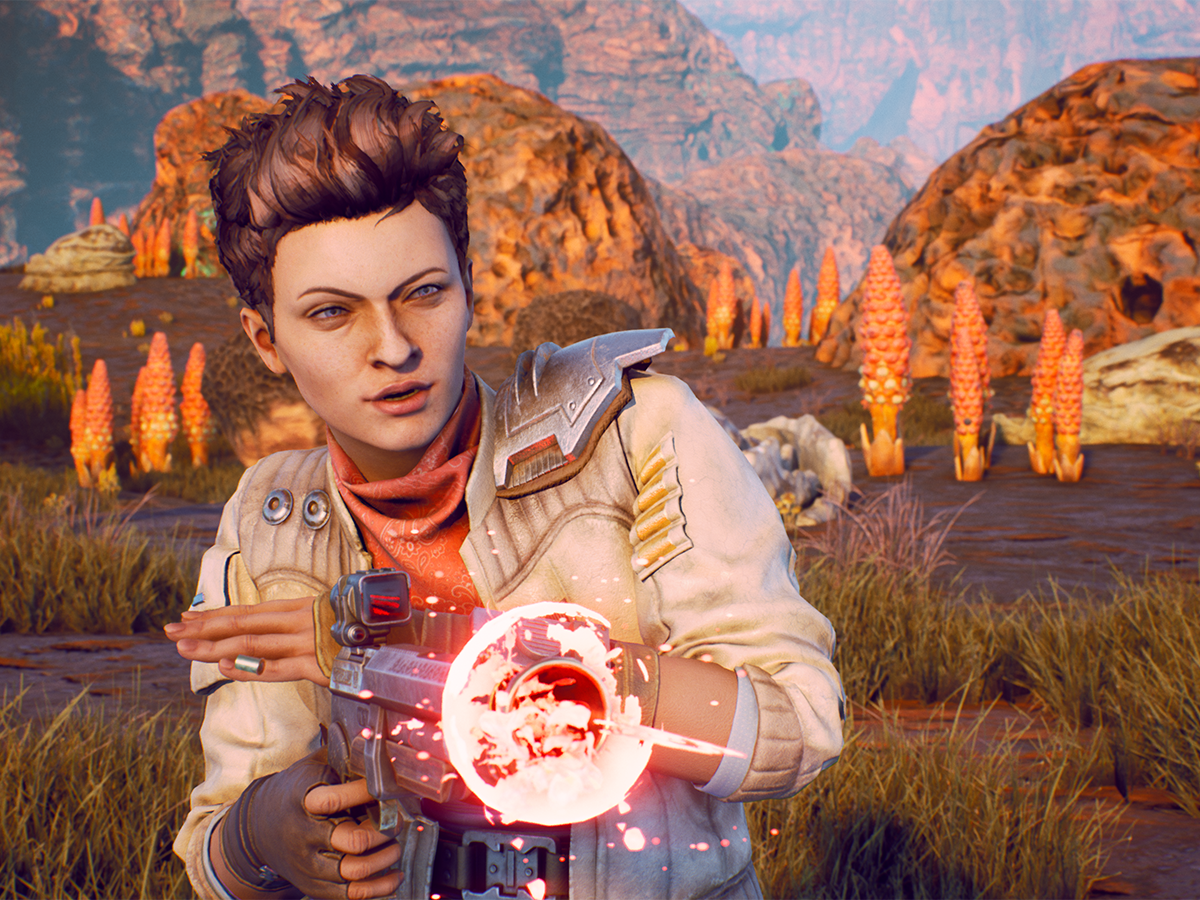The Outer Worlds review
Obsidian goes interstellar with a fascinating FPS/RPG

Obsidian has dipped its toes into many an RPG but its most memorable is still arguably Fallout: New Vegas, which some consider to be superior to anything developed by Bethesda themselves. It’s no surprise, then, that fans have been pining for the developer to have another crack at the series, especially given the poor reception to the buggy and lifeless mess of Fallout 76.
The Outer Worlds is essentially a spiritual successor to New Vegas. The systems, perks and complex choices are as familiar, as is Fallout’s brand of black humour and retrofuturism, except this time they’ve been blasted into space to the planetary system of Halcyon where the greatest threat isn’t nuclear annihilation but heartless corporations, where worker exploitation and corporate cover-ups go hand-in-hand with bureaucracy and cheesy jingles.
Fallout in Space

The game begins as you’re awoken from cryosleep only to discover that you’re among a group of colonists consisting of Earth’s brightest that were left abandoned in space. It soon falls to you to find a way to unfreeze the remaining colonists who might be the source of Halcyon’s salvation against the corporations and its totalitarian authority, The Board.
The journey there will require hopping around Halcyon’s planets and moons, each with their own factions and goals that you’ll also be bumping heads with or helping. There’s Terra 2, home to an industrial backwater town like Edgewater, as well as the luxurious district of Byzantium, while the terraformed moon of Monarch is one of the vastest.
In any case, these usually require fast-travelling to reach in their own self-contained maps, while entering a large building or getting into some caves or an underground hideout also requires a loading screen to reach.
All maps are distinct in their design, the alien flora and fauna adding more colour than another brown nuclear wasteland, and they’re refreshingly free of bugs – though you’ll still have to deal with the dangerous wildlife or lawless marauders always around to cause trouble.
It’s not the best choice, it’s Player’s Choice

The Outer Worlds plays much more like a straight first-person shooter, but it does have an interesting alternative to Fallout’s V.A.T.S system in the form of TTD (Tactical Time Dilation). While essentially a fancy way of slowing time as a side effect to your lengthy time in cryosleep, it also allows you to detect an enemy’s level as well as weak spots, though its short duration and lengthy recovery time means you can’t rely on it in the thick of a firefight.
But true to its RPG sensibilities, there are just as many ways to get around conflict, whether it’s stealthing around or by being a good talker. Indeed, if you spend your attribute points towards Dialogue, your increasing ability to persuade, intimidate or just outright lie can often diffuse a situation. Otherwise, money is sometimes the only language some characters need to understand.
You can also recruit a few oddball but likeable characters into the fold, and though you can’t woo them, they make for helpful companions with their own arcs. While they follow your lead when you’re crouching to stealth, they still have a knack of getting themselves killed easily – though it’s with relief that permadeath is reserved only for the highest difficulty.
All the time in the world

As much as The Outer Worlds teases something epic, it’s also surprisingly brief. At first, plenty of optional quests open up for you to take as you see fit, but the first half also suffers from a propensity to kick the can on quests, as it asks you do one more thing before you can progress, rather undercutting a moment when one character asks you to find an arbitrary number of items only to turn around to say it’s just a joke.
Conversely, in the second half, you’re barely in one area for long before you’re off again. Before you realise it, you’ve arrived at the point of no return to a climax that’s reduced to a brutal slog against heavily armed foes that only the most trigger-happy build will feel capable against. It’s also disappointing to discover that some planets that appear on Halcyon’s map aren’t actually places you can visit at all, perhaps hinting at future DLC.
Nonetheless, when RPGs often fall into the trap of bloat, the length makes it easier to go straight in for another playthrough. Perhaps this time you’ll be a genocidal maniac, or you’ll side with The Board, or perhaps screw over that NPC you originally agreed to help. Or maybe you’ll simply wander Halcyon all by your lonesome (and then upgrade the Lone Wolf perk to make that beneficial).
The Outer Worlds verdict

The formula doesn’t stray too far from Fallout but it also has decent gunplay and intelligent satire in its setting to make it the thinking man’s Borderlands.
In The Outer Worlds, Obsidian has created a rich and fascinating universe with an abundance of choices that are rarely ever black-or-white. That’s enough to make it worth jumping back in to see how you might choose to play things a second, or third time around.
Stuff Says…
A worthy space romp however you choose to play it
Good Stuff
Smart satirical storytelling and worldbuilding
Solid FPS gameplay but RPG depth first and foremost
High replayable with lots of different outcomes and ways to play
Bad Stuff
Uneven pacing
Halcyon isn’t as big as you’re led to believe



